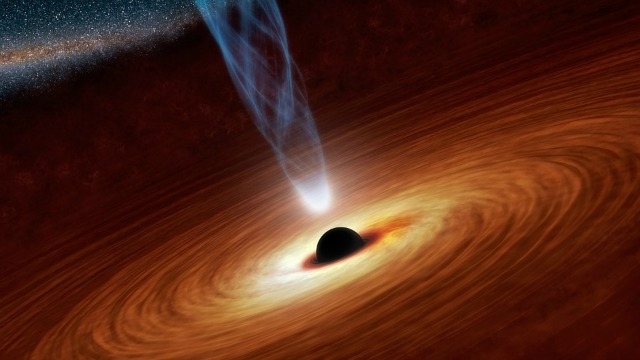Astronomers find stray black hole hiding in Milky Way
Astronomers find stray black hole hiding in Milky Way
This marks the beginning of the search for quiet black holes, researchers said.
Millions of such objects are expected to be floating in the Milky Way although only dozens have been found to date.
It is difficult to find black holes, because they are completely black. In some cases black holes cause effects which can be seen.
For example if a black hole has a companion star, gas streaming into the black hole piles up around it and forms a disk. The disk heats up due to the enormous gravitational pull by the black hole and emits intense radiation.
However, if a black hole is floating alone in space, no emissions would be observable coming from it.
Researchers led by graduate student Masaya Yamada and Professor Tomoharu Oka from Keio University in Japan used the ASTE Telescope in Chile and the 45-m Radio Telescope at Nobeyama Radio Observatory to observe molecular clouds around the supernova remnant W44, located 10,000 light-years away from us.
Their goal was to examine how much energy was transferred from the supernova explosion to the surrounding molecular gas, but they happened to find signs of a hidden black hole at the edge of W44.
Researchers found a compact molecular cloud with enigmatic motion. This cloud, named the Bullet, has a speed of more than 100 kilometres per second, which exceeds the speed of sound in interstellar space by more than two orders of magnitude.
In addition, this cloud, with the size of two light-years, moves backward against the rotation of the Milky Way Galaxy.
To study the origin of the Bullet, the team observed the gas cloud with ASTE and the Nobeyama 45-metre Radio Telescope.
The data indicate that the Bullet seems to jump out from the edge of the W44 supernova remnant with immense kinetic energy.
"Its kinetic energy is a few tens of times larger than that injected by the W44 supernova. It seems impossible to generate such an energetic cloud under ordinary environments," said Yamada.
The team proposed a dark and compact gravity source, possibly a black hole, has an important role.
With the present dataset, it is difficult for the team to distinguish the size of the black hole.
Theoretical studies have predicted that 100 million to one billion black holes should exist in the Milky Way, although only 60 or so have been identified through observations to date.
"We found a new way of discovering stray black holes," said Oka.
The team expects find more solid evidence for a black hole in the Bullet with higher resolution observations using a radio interferometer, such as the Atacama Large Millimetre/submillimetre Array (ALMA) in Chile.



No comments: